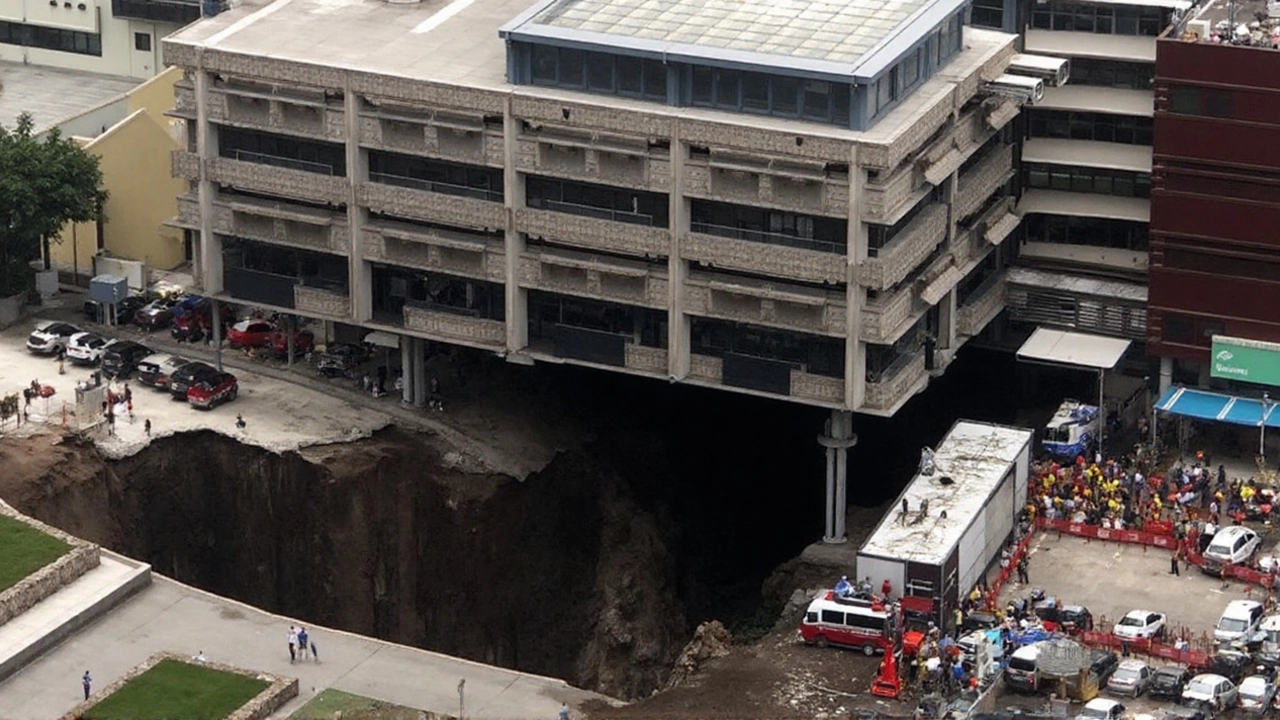Bangkok Sinkhole: What Causes It and How It Impacts the City
When dealing with Bangkok sinkhole, a sudden collapse of ground in Thailand's capital often triggered by water pressure and construction work. Also known as urban sinkhole in Bangkok, it poses a real challenge for residents and planners alike. Bangkok sinkhole isn’t just a random hole; it’s a symptom of deeper issues that tie together geology, city growth, and disaster preparedness.
Key Factors Behind Bangkok Sinkholes
The first thing to understand is the sinkhole, a depression formed when the ground surface gives way to voids below. In Bangkok, these voids often develop in soft clay and limestone layers that lie beneath the flood‑prone city. Geology, the study of Earth’s materials and processes plays a direct role: water from heavy rains or faulty drainage seeps into the soil, eroding the support for heavy structures. At the same time, rapid urban infrastructure, roads, buildings, and underground utilities built on soft ground adds extra load, increasing the chances of collapse. In short, Bangkok sinkhole formation requires weak subsurface layers, excess water, and heavy surface load – a classic triple of risk.
Another driver is the city’s aggressive land‑reclamation projects. Developers pump huge volumes of water to compact soil for high‑rise towers, unintentionally raising the water table in nearby areas. When the pressure builds, the hidden cavities can burst open, creating a sinkhole overnight. This dynamic shows how urban development can influence natural processes, making disaster risk management a vital part of city planning.
Historically, Bangkok has seen several high‑profile sinkhole events that sparked public debate. Each incident highlighted gaps in monitoring and response. For example, a 2013 sinkhole near a popular market forced nearby businesses to shut down for weeks, costing owners thousands. These cases teach us that early detection – using ground‑penetrating radar or real‑time water‑level sensors – can save money and lives.
Addressing the problem means looking at both prevention and mitigation. On the prevention side, stricter building codes that require deep foundations and better drainage are essential. Engineers also recommend using soil‑stabilization techniques, such as injecting cementitious materials into vulnerable zones. Mitigation, on the other hand, involves having clear emergency plans: rapid assessment teams, public‑alert systems, and designated safe routes for evacuation. When these elements work together, the city can reduce the impact of any future sinkhole.
Our tag page pulls together a surprisingly wide mix of articles – from basic soccer rules to a high‑profile defamation lawsuit – showing how diverse the United Soccer Hub community is. While most posts focus on the beautiful game, the inclusion of this tag reminds us that real‑world events, like the Bangkok sinkhole, also shape the lives of fans and athletes. Below you’ll find deeper dives into the science, the city’s response, and practical tips for anyone living or working in Bangkok. Keep reading to see how a single hole can teach us big lessons about urban safety and resilience.
- By Colton Westwood
- /
- 25 Sep 2025
Bangkok Sinkhole Cripples Hospital and Halts MRT Construction
A 50‑meter deep sinkhole opened outside Vajira Hospital in Bangkok on September 24, swallowing cars and utility poles. Officials traced the collapse to a faulty MRT tunnel joint, prompting evacuations, halted admissions, and power cuts. No injuries were reported, but nearby buildings remain unsafe. Authorities race to seal the hole before rain worsens the damage. The event reignites debate over rapid underground development in a crowded city.

